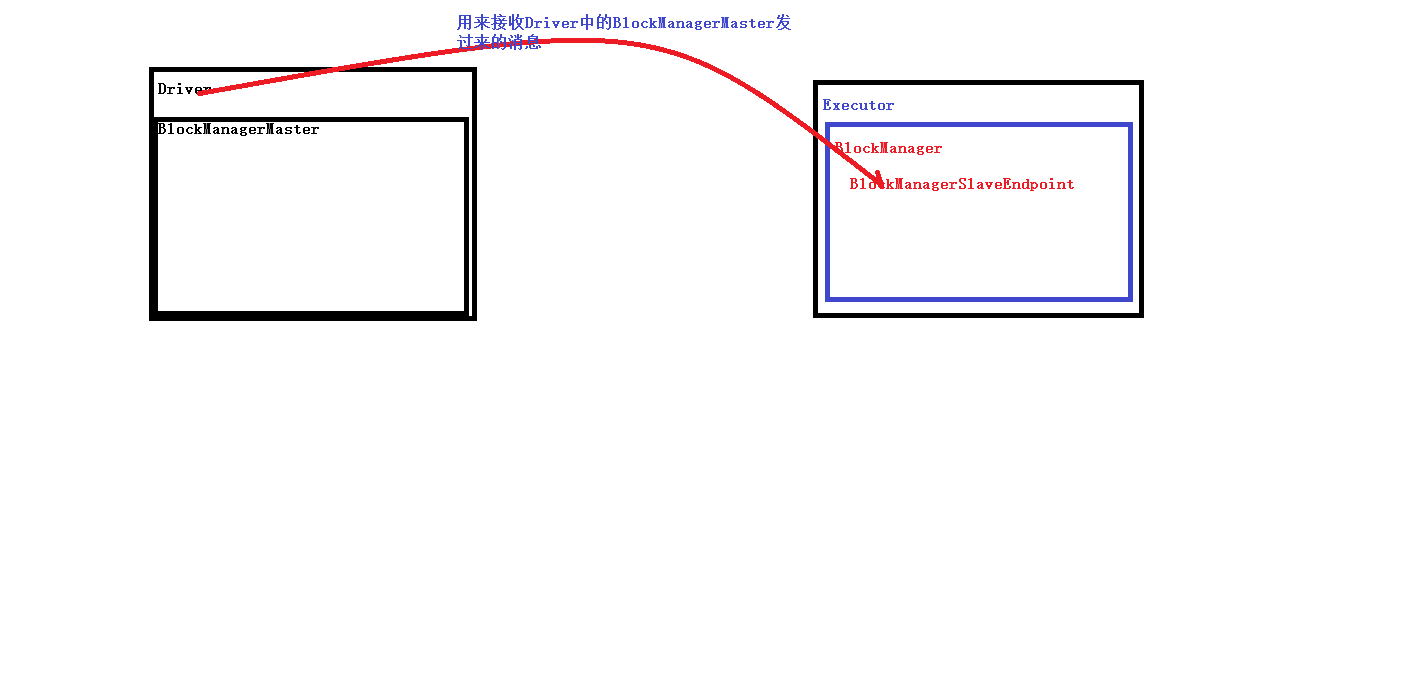本篇博文的重要内容如下:
1. BlockManager的注册和初始化
2. BlockManager里面的重要函数详细介绍
先对一些基本概念名词介绍:
Block是Spark数据处理的时候最小单位
一:BlockManager初始化
1. BlockManager的实例对象调用initializes的时候才能正常工作。
启动initializes方法又两个作用:BlockTransferService(网络通信),ShuffleClient
/**
* Initializes the BlockManager with the given appId. This is not performed in the constructor as
* the appId may not be known at BlockManager instantiation time (in particular for the driver,
* where it is only learned after registration with the TaskScheduler).
*
* This method initializes the BlockTransferService and ShuffleClient, registers with the
* BlockManagerMaster, starts the BlockManagerWorker endpoint, and registers with a local shuffle
* service if configured.
*/
在executor启动的时候通过BlockManager.initialize来实例化Executor的BlockManager。
if (!isLocal) {
env.metricsSystem.registerSource(executorSource)
env.blockManager.initialize(conf.getAppId)
}
BlockManager在启动的时候都会向BlockManagerMaster注册。
master.registerBlockManager(blockManagerId, maxMemory, slaveEndpoint)并且创建BlockManagerSlaveEndpoint这个消息循环体来接受Driver中的BlockManagerMaster发过来的指令,例如删除Block等;
private val slaveEndpoint = rpcEnv.setupEndpoint(
"BlockManagerEndpoint" + BlockManager.ID_GENERATOR.next,
new BlockManagerSlaveEndpoint(rpcEnv, this, mapOutputTracker))
下面就具体看一下BlockManagerSlaveEndpoint,从注释里面可以看到, BlockManagerSlaveEndpoint接收BlockManagerMaster发过来的信息。
/**
* An RpcEndpoint to take commands from the master to execute options. For example,
* this is used to remove blocks from the slave's BlockManager.
*/
BlockManager注册
1. 通过RegisterBlockManager注册BlockManager
/** Register the BlockManager's id with the driver. */
def registerBlockManager(
blockManagerId: BlockManagerId, maxMemSize: Long, slaveEndpoint: RpcEndpointRef): Unit = {
logInfo("Trying to register BlockManager")
tell(RegisterBlockManager(blockManagerId, maxMemSize, slaveEndpoint))
logInfo("Registered BlockManager")
}2. Tell就将此方法发送给Driver端。
/** Send a one-way message to the master endpoint, to which we expect it to reply with true. */
private def tell(message: Any) {
if (!driverEndpoint.askWithRetry[Boolean](message)) {
throw new SparkException("BlockManagerMasterEndpoint returned false, expected true.")
}
}
3. 当BlockManagerSlaveEndpoint实例化后,Executor上的BlockManager需要向Driver上的BlockManagerMasterEndpoint注册。








 本文详细介绍了Spark中的BlockManager初始化和注册过程,包括Executor上的BlockManager如何向Driver注册,以及BlockManager的核心方法。BlockManager是Spark数据处理的最小单位,初始化涉及BlockTransferService和ShuffleClient。BlockManager在启动时会向BlockManagerMaster注册,并通过BlockManagerSlaveEndpoint接收Driver的指令。注册过程包括BlockManagerMasterEndpoint的register方法,用于管理BlockManager信息。此外,讨论了BlockManager的重要方法,如内存和磁盘的数据检索,以及在资源紧张时的数据处理策略。
本文详细介绍了Spark中的BlockManager初始化和注册过程,包括Executor上的BlockManager如何向Driver注册,以及BlockManager的核心方法。BlockManager是Spark数据处理的最小单位,初始化涉及BlockTransferService和ShuffleClient。BlockManager在启动时会向BlockManagerMaster注册,并通过BlockManagerSlaveEndpoint接收Driver的指令。注册过程包括BlockManagerMasterEndpoint的register方法,用于管理BlockManager信息。此外,讨论了BlockManager的重要方法,如内存和磁盘的数据检索,以及在资源紧张时的数据处理策略。


 最低0.47元/天 解锁文章
最低0.47元/天 解锁文章















 520
520

 被折叠的 条评论
为什么被折叠?
被折叠的 条评论
为什么被折叠?








